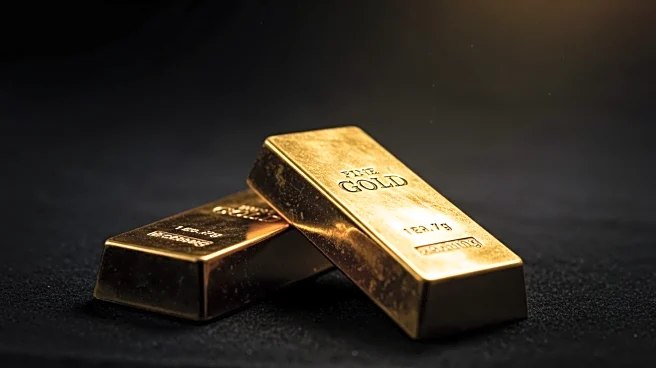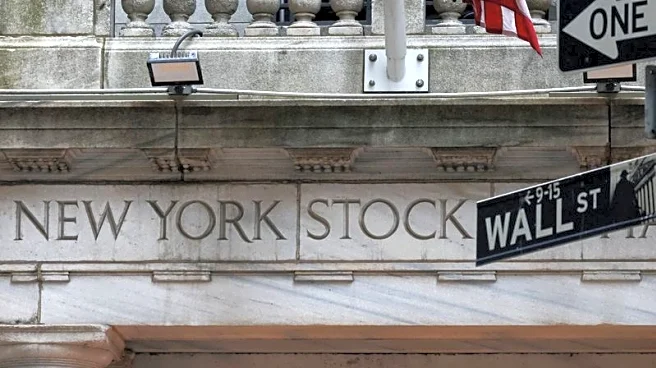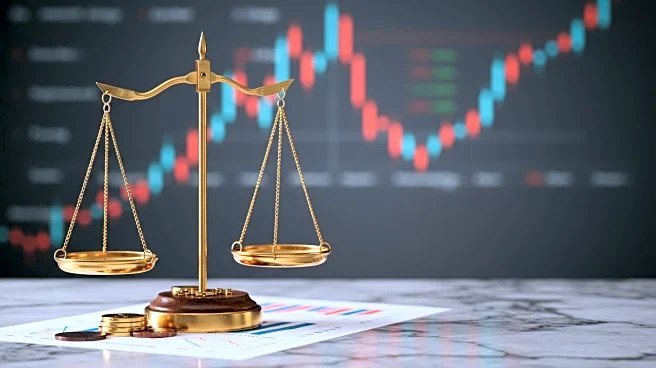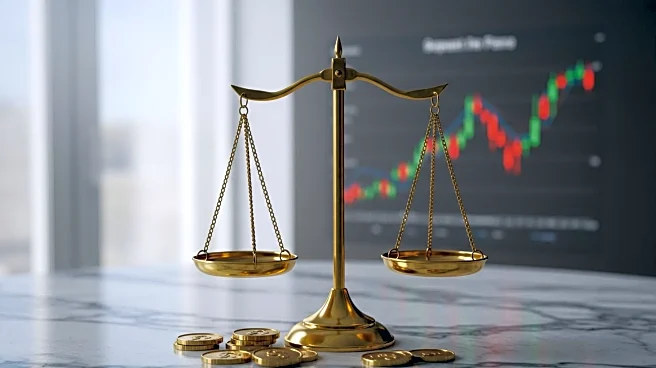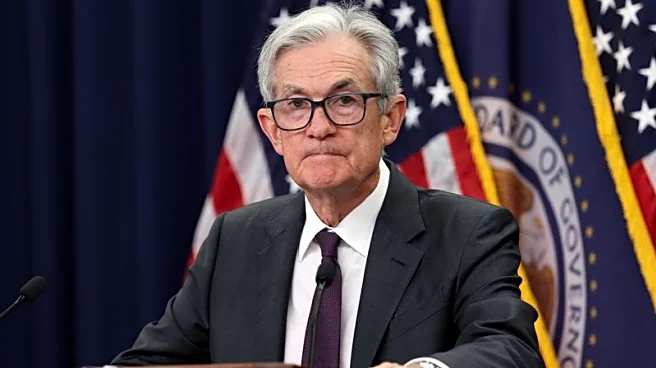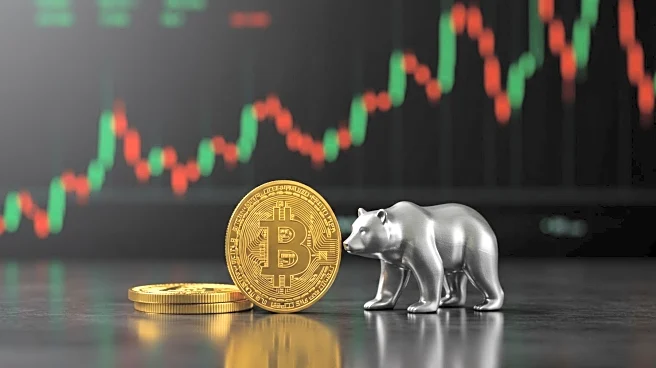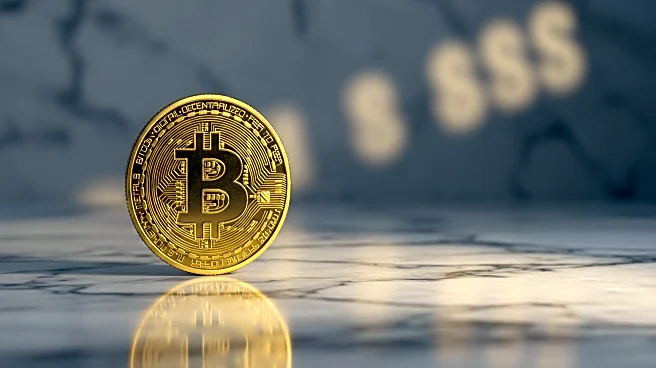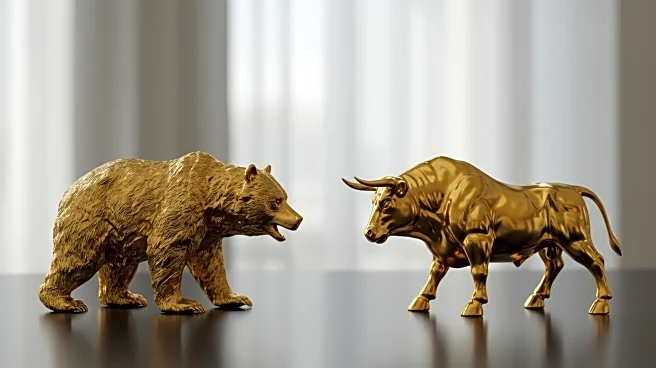What's Happening?
Investors are increasingly turning to gold exchange-traded funds (ETFs) as a hedge against market volatility and inflation. According to the World Gold Council, global gold ETFs saw inflows of $3.2 billion in July, marking a significant interest in the gold market. Joe Cavatoni, managing director at the World Gold Council, highlighted the unprecedented levels of interest in gold-backed ETFs, particularly from U.S. investors. The demand for gold has been driven by its reputation as a safe-haven investment during times of uncertainty. The Trump administration recently dispelled rumors of potential tariffs on gold, which could have added to the market's uncertainty. This reassurance has led to expectations of continued growth in gold investments, particularly through ETFs, which offer a convenient way for investors to diversify their portfolios.
Why It's Important?
The surge in gold ETF investments underscores a broader trend of investors seeking stability amid economic uncertainty. As inflation concerns persist, gold's role as a hedge becomes increasingly attractive. The inflows into gold ETFs reflect a strategic shift among investors to protect their portfolios from potential market downturns. This trend is significant for the financial markets, as it indicates a growing preference for tangible assets like gold over traditional equities. The continued interest in gold ETFs could lead to further diversification in investment strategies, impacting the allocation of assets across various sectors. Additionally, the comparison to bitcoin ETFs highlights the evolving landscape of investment vehicles, with gold maintaining its status as a reliable hedge.
What's Next?
As the demand for gold ETFs continues to rise, financial advisors and investors may increasingly consider these funds as a core component of their investment strategies. The potential for further growth in gold investments could lead to increased competition among ETF providers, driving innovation and potentially lowering costs for investors. Additionally, the ongoing economic uncertainties, including inflation and geopolitical tensions, may further bolster the appeal of gold as a safe-haven asset. Investors will likely monitor global economic indicators closely to assess the continued viability of gold as a hedge, potentially leading to more strategic allocations in their portfolios.
Beyond the Headlines
The growing interest in gold ETFs also raises questions about the long-term sustainability of this trend. As more investors flock to gold, the market dynamics could shift, potentially affecting the price and availability of gold. Furthermore, the environmental and ethical implications of gold mining may come under increased scrutiny, prompting discussions about sustainable investment practices. The rise of gold ETFs also highlights the broader trend of financial innovation, as investors seek new ways to manage risk and achieve diversification in an increasingly complex market environment.
